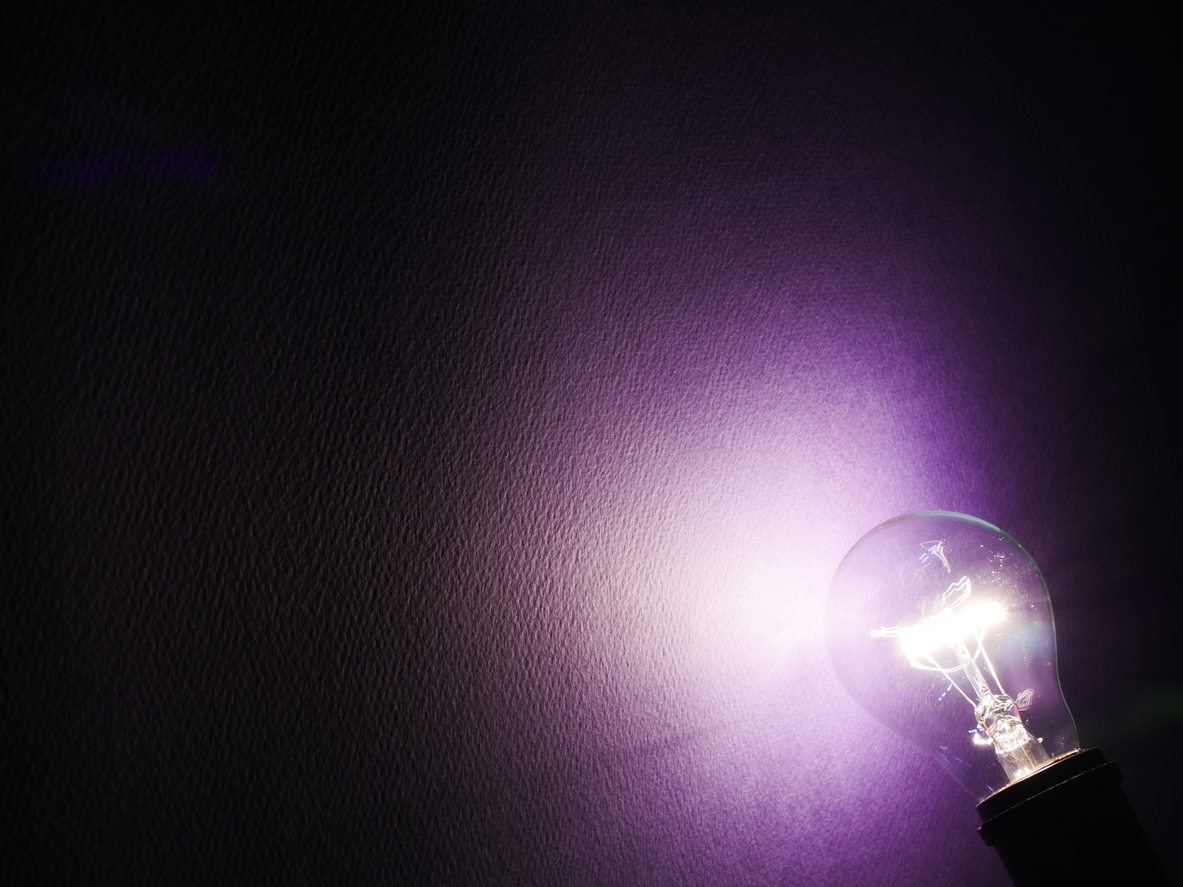

We may earn revenue from the products available on this page and participate in affiliate programs. Learn More ›
Watts have been used to indicate the strength of light bulbs for more than 150 years, but they are actually a measure of energy consumption, not brightness. Using a lower-watt incandescent bulb saves energy and reduces utility bills, but frequently results in less light. Modern LED lights, however, use as little as a fifth of the energy of conventional bulbs to produce the same amount of light, and therefore the wattage doesn’t tell you how bright they are.
For that you need to know the number of lumens emitted by the light source. Just to confuse things, however, the term “lux” is also frequently used. To provide some clarity regarding these terms, we’ve put together this short but informative look at what lux vs lumens means in real-world terms.

Lux is a measure of illuminance.
Lux is a measurement of the amount of light that falls on a surface, which differs from the amount of light that is emitted from a light source. “X” number of photons may be emitted from a light source, but some number of those photons never make it to the surface of something you’re looking at, or they are absorbed by the surface.
Lux can vary depending on the light source, the distance the object in question is from the light source, how dark the surface of the object is, the width of the beam of light, etc. A tightly-focused flashlight beam will produce a greater lux value than an ordinary table lamp, even if the bulb is the same in both.
RELATED: Solved! The Best Bathroom Lighting
Lumens is a measure of luminous flux.
Lumens, on the other hand, is a measurement of the light that a light source emits. Light, the instant it is emitted, travels in all directions at once, and, as we mentioned above, many of those particles of light don’t strike the surface of what we are looking at.
When you’re shopping for lighting, look for charts that make comparisons between lumens and traditional wattage. Because most of us are most familiar with incandescent wattage, it’s probably most useful to note the lumens associated with, for example, a 40-watt incandescent bulb to understand how bright, in this case, 450 lumens is.

Lumens is the most common measurement used by lighting manufacturers today.
Most of the world’s light bulb makers have now adopted lumens as the standard for describing the brightness of their products. In the United States, this change is reinforced by the Federal Trade Commission, which requires all consumer packaging to carry a standardized label. A fixed set of information must be provided:
- Lumens rating
- Estimated energy cost
- Expected lifespan
- Light appearance
- Energy usage in watts
Lumens is a perfectly adequate measurement for consumers, who simply know, for example, that a 100W incandescent bulb was adequate for a living room light, and so can consult a chart to know to look for a 1,700-lumen light source to get an equivalent amount of light.
RELATED: This DIY Lighting Solution is Perfect for Closets and Other Dark Spaces
When lux measurements are crucial for professionals.
Commercial lighting designers, however, have a different task. They’re often looking to meet clients’ needs for a particular amount of lighting striking a task area. And since lux is the amount of light reaching a particular area, these professionals must complete calculations to determine how many lumens are needed to achieve a certain amount of lux.

They use light meters (lux meters) to measure levels at different points around a room and on different surfaces. They can then calculate the amount and type of lighting required. Some spaces need to be flooded with light, while others need it focused in particular areas.
Lighting designers have developed minimum recommended lux levels for various spaces that are designed to ensure adequate and a safe amount of light while maintaining people’s comfort:
- 100-150 lux for restrooms, elevators, corridors
- 250 lux for meeting halls, libraries, and classrooms
- 500 lux for retail spaces and offices
- 750 lux for factories and indoor sports venues
- 1000 lux for operating rooms
Lux is an important measure, also, when designing car headlights, because while lumens indicate the brightness of the bulb, lux is the light falling on an object on the road ahead.
Final Thoughts
This article is titled “Lux vs Lumens” because those are the terms that cause confusion. However, it’s not really a case of one versus the other at all. They are each methods of measuring brightness and both have an impact in our day-to-day lives. While lux is of great interest to lighting designers and product manufacturers, most people are unlikely to buy a lux meter and make the necessary calculations when buying lighting for the home. However, we do need to get used to assessing light sources using lumens rather than watts, because whether you buy conventional incandescent or low-energy LED, that’s the way the brightness is measured and described.
